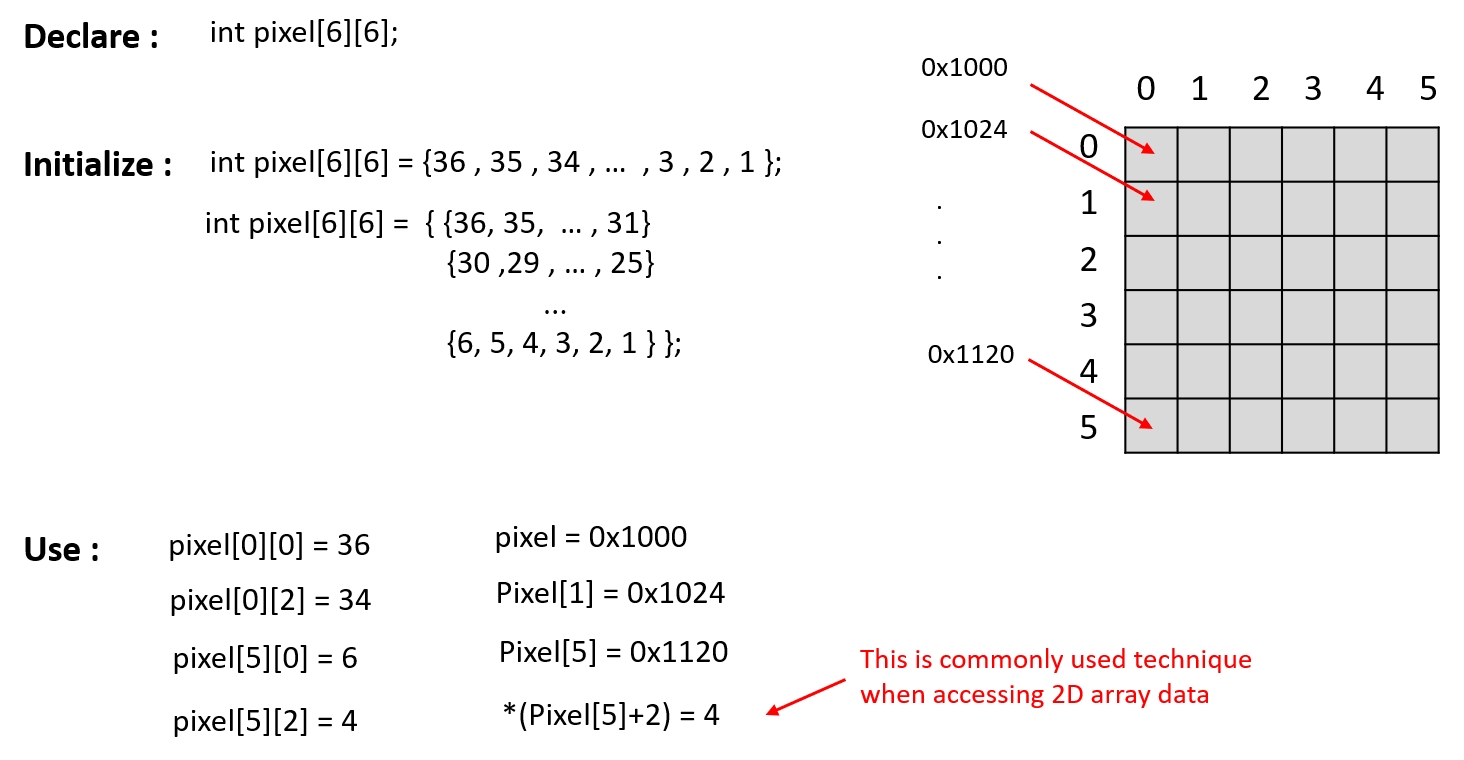#include <stdio.h>
#include <iostream>
#include <stdlib.h>
#include <math.h>
using namespace std;
// Commonly used
void printVec(double* _vec, int _row);
void printMat(double(_mat)[3][3], int _row, int _col); // if array dimension(M,N) is known
int main()
{
int val = 1;
int i, j, k;
/* Static Vector Allocation: */
// 1-D array fixed array size and initial constant values
double a[4] = { 1, 2, 3, 4 };
// Print 1-D array element
printf("\n Printing Vector \n");
printVec(a, 4);
/* Static Matrix Allocation */
// 2-D array of fixed array size and initial constant values
// Declaring & Assigning Array
int _row = 3, _col = 3;
double *P[3];
double A[3][3] = { { 1, 2, 3 }, { 4, 5, 6 }, { 10, 9, 8 } };
// Print 2-D array element
printf("\n Printing Matrix \n");
// Passing 2D to a function
printMat(A, _row, _col);
// Simple method to access 2-D arrays
printf("A[i][k] \t \n");
for (i = 0; i < _row; i++)
{
for (k = 0; k < _col; k++)
printf("A[%d][%d]=%.1f \t", i, k, A[i][k]);
printf("\n");
}
printf("\n\n");
system("pause");
}
void printVec(double *_vec, int _row)
{
for (int i = 0; i<_row; i++)
printf("Vector[%d] = %.1f \n", i, _vec[i]);
printf("\n");
}
void printMat(double(_mat)[3][3], int _row, int _col)
{
int i, j;
for (i = 0; i < _row; i++)
{
for (j = 0; j < _col; j++)
printf("%.1f \t", _mat[i][j]);
printf("\n");
}
printf("\n");
}
